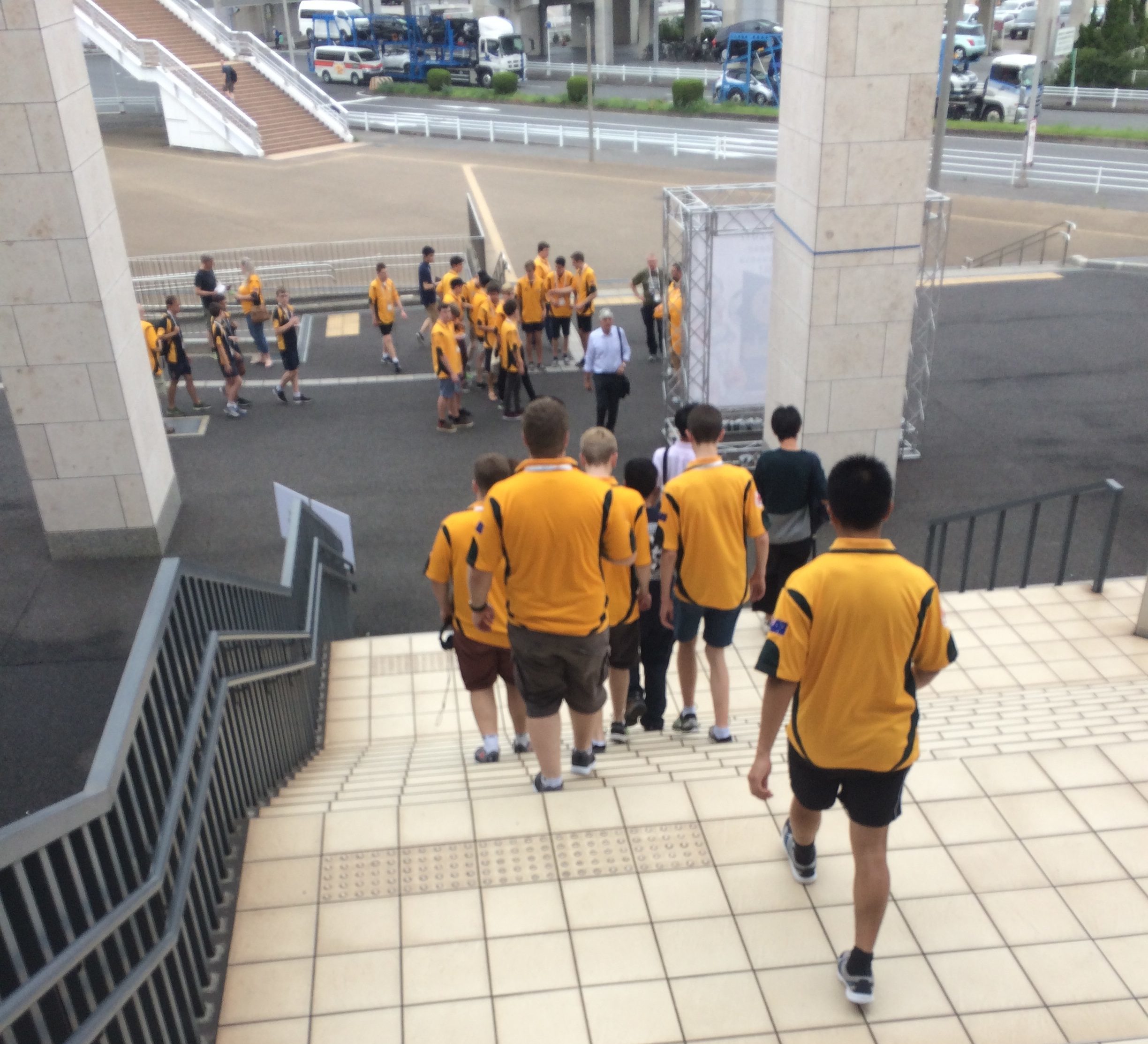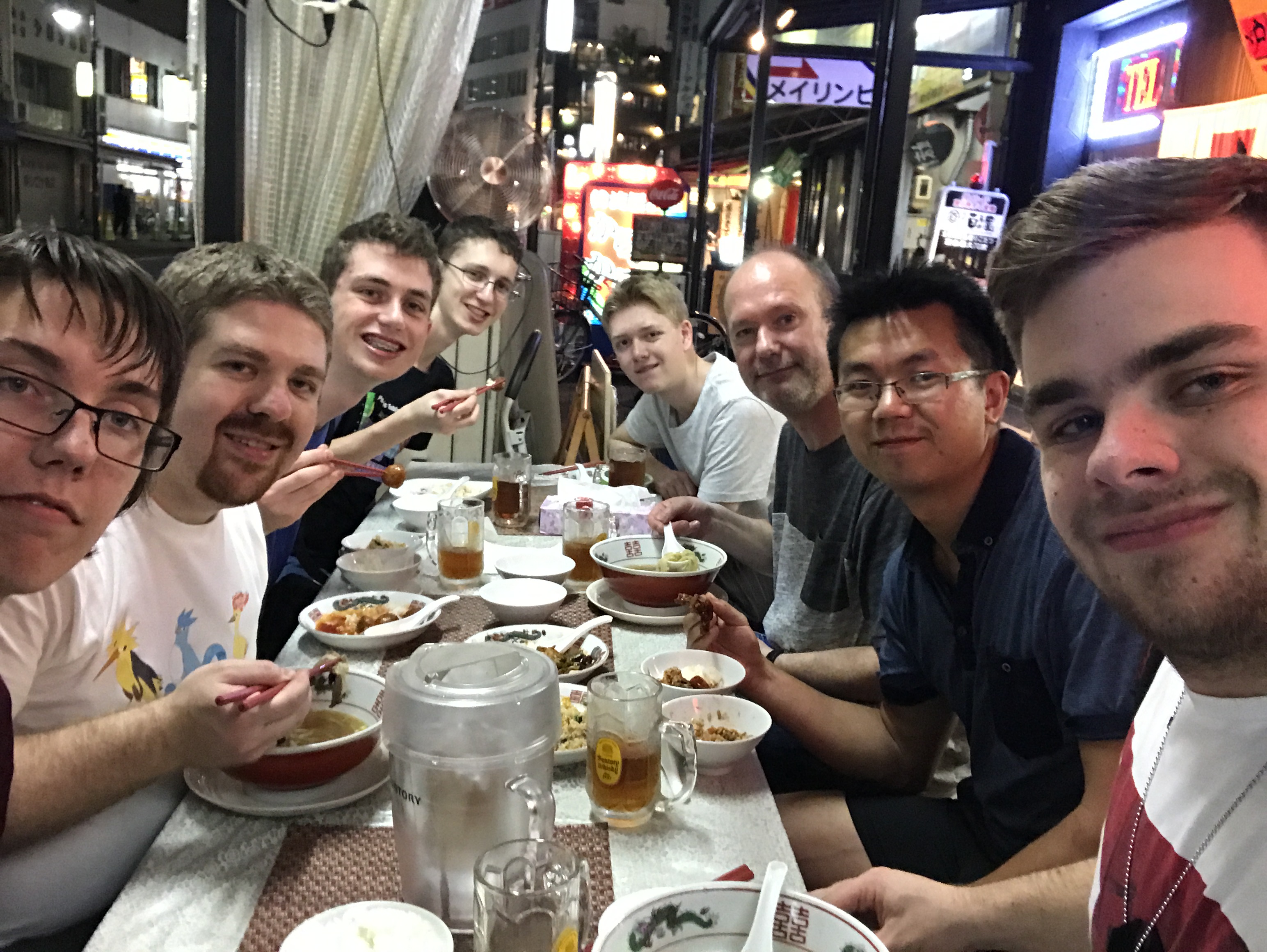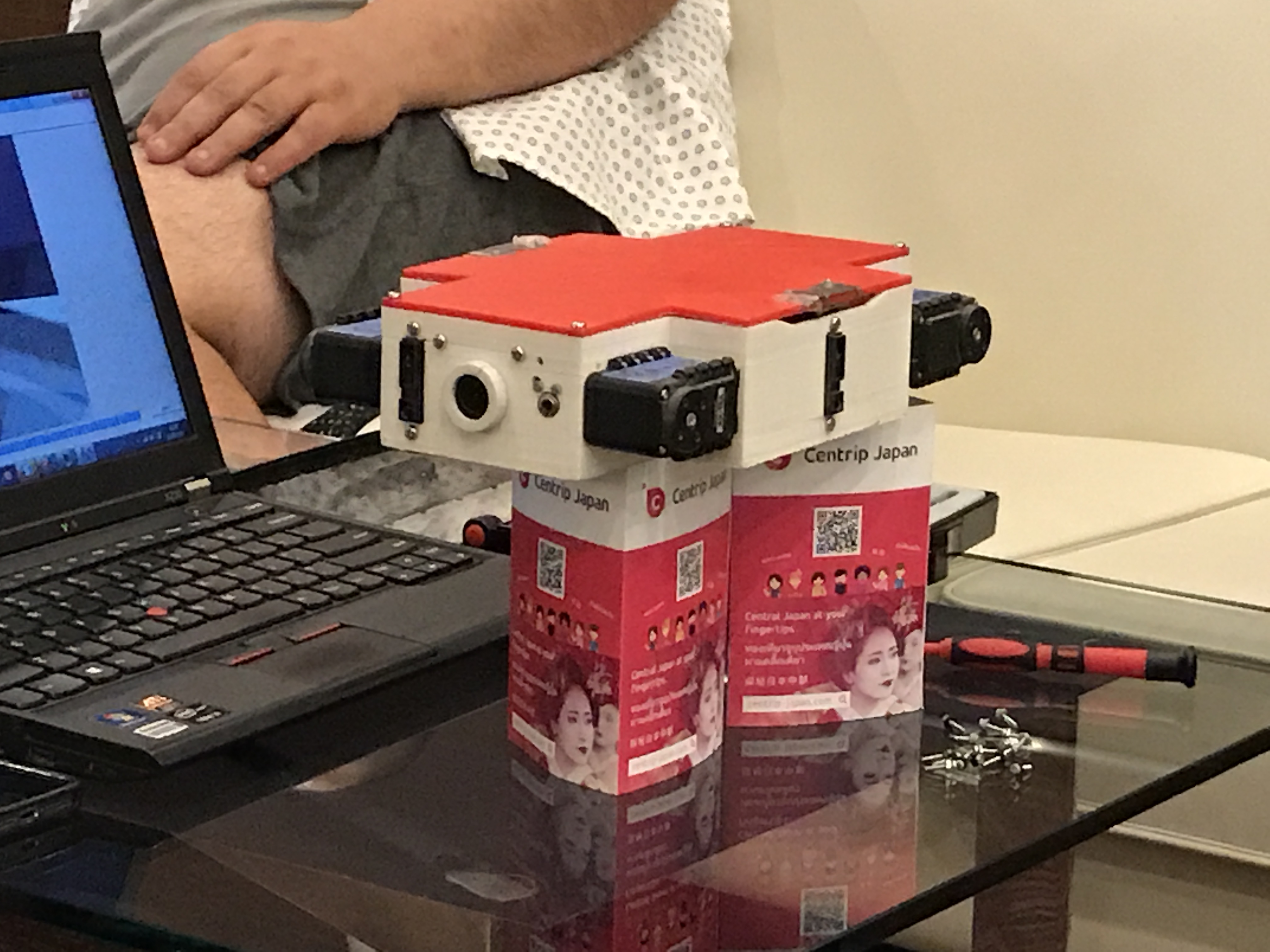The 27th of July was the first day of RoboCup 2017. In our division, the Rapidly Manufactured Robot League, the first day was designated a practice day – a time where teams could test various versions of their robots on the final mazes and decide which configuration to use in the preliminary runs on the 28th. Having done this and decided on our beltless configuration on the previous day, we used the practice day to train our controllers and work on our motion/hazmat detection scripts.

Above: Practicing speed runs in the sandy terrain to determine the optimal path and speed for the best results. Taken on the 27/07/2017 at 9:45 AM.
This was also the first day we ever got our hands on the “sensor board” (creatively named thus because it is the board used to test the sensors). Sensors and automatic detection were something that we had been neglecting up to this point because we had incorrectly assumed that we would only get extra points for sensors. What we learned on the day was that they were actually score multipliers, meaning that our score in the mazes would be multiplied by our sensor score – a huge game changer.
As it stood, we would only get points for our clear and lagless video stream. No matter how well we did in the maze, if any other team had completed more sensor tests, they would easily shoot past us. To close the gap, Ryan spent a lot of time working on hazmat sign detection and QR code reading while I looked at basic motion detection. The pressure was on: What we should have been doing for months now had to be completed in a few days.

Above: Ryan working on QR code detection and reading while Mr Stock poses for the photograph. Taken on the 27/07/2017 at 11:12 AM.
After a short lunch break, we joined the other Australian teams from Junior Rescue and Soccer for a photograph outside the Ocean Arena (Hey, still waiting for those to be sent through!!).

Above: Descending the steps towards yet another photo session. Taken on the 27/07/2017 at 1:03 PM.
Back inside, we continued the practise and development of the new sensor features. We left the venue after 6 PM and returned to Nagoya for dinner.

Above: The team enjoy dinner after the second long day. Taken on the 27/07/2017 at 8:27 PM.
However, the work didn’t stop there. Once we returned to our hotel, we continued working on the robot. The wheels were also washed (due to the sand runs earlier in the day) and new plasti-dip was applied.

Above: The robot awaiting its newly plasti-dipped wheels. Taken on the 27/07/2017 at 10:20 PM.
In our attempt to win the “Open Source Award” part of the competition, we continued posting to the OARkit google group, sharing our updated code on GitHub, and our observations from practice to help other teams improve. Among the suggestions we had was to implement variable speed. We have a servo speed changing feature in increments of 10%, which we found was very helpful during the practice runs, as higher speeds (more momentum) and lower speeds (more control and torque) are useful in different situations. We noticed a number of teams only have two or even a single speed setting/s, so we recommended that everyone took some time to consider implementing variable speed.
We went to bed around 11 PM (we didn’t know it at the time, but that would be the earliest night we would get for the next 4 days) with high spirits, looking forward to the preliminary competition on Friday.
